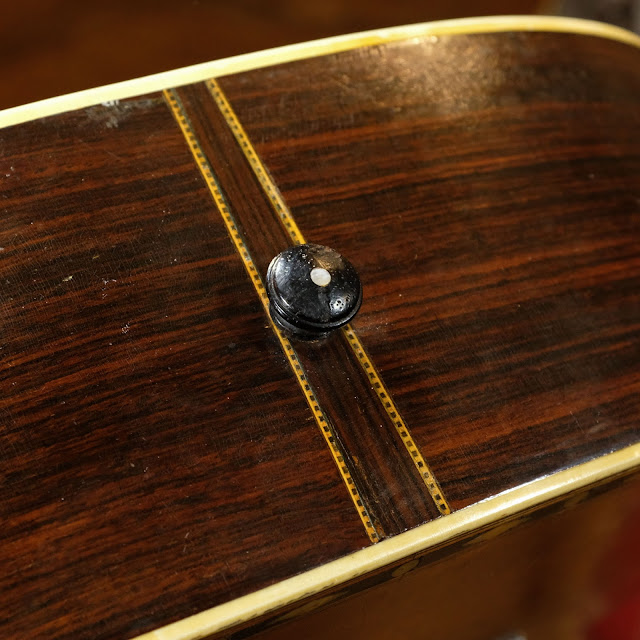1902 Bauer-made Sears "The Princeton" Parlor Guitar
She's a beaut, huh? The owner of this guitar is a bit of a Bauer-guitar fan (see this one and this one), so it was no surprise that Bauer #3 arrived on my doorstep one day for service. He sent along some historical documentation with this guitar (see the end of this post), but the gist of it is that it'd previously been in one family since 1906. Apparently, a grandfather and his friend were living in San Francisco when the the big quake of 1906 hit. The friend never came back for the guitar, so it stayed in the previous owner's family after that.
Per the new owner's fact-hunting, this guitar was probably sold as a Sears-catalog "Acme Professional" product. It would've been a "The Princeton" model. I've got a snapshot of his photocopied catalog page on that down the post, too.
At a glance, one can tell that this is a high-quality instrument. There's pearl inlay throughout, the build is sturdy, and it's well-executed, too. At the time it was made, it was probably intended for gut (modern: nylon/nylgut) strings, but it'd worn steel for most of its life without ill effect, so I left the Thomastik Plec strings (something like 46w-10?) on it after surgery and it has a sweet, crisp, clean tone for fingerpicking. For flatpicking, I think something like monel-wound or nickel-wound in the same gauges would probably pull a lot more out of it.
Work included: a neck reset, fret level/dress, modification of the bridge to feature a compensated drop-in saddle slot and cleaner bridge-pin holes (the bridge had been sloppily-repaired in the '70s which is where it got the weird white-putty stuff around its edges), some regluing to the back braces, and a setup. It plays on-the-dot with a straight neck and 3/32" EA and 1/16" DGBE action at the 12th fret.
Specs are: 24 1/4" scale length, 1 13/16" nut width, 1 1/2" string spacing at the nut, 2 1/4" spacing at the bridge, 12 3/4" lower bout, 9 1/4" upper bout, and 4" side depth. That puts it at just-over a Martin size 2 in dimensions.
Materials are: solid Brazilian rosewood back, sides, and headstock veneer, mahogany neck, solid spruce top with ladder/transverse bracing, ebony fretboard and bridge, and profuse pearl throughout. All edges are bound. The nut is the original ebony but the saddle is new bone and the bridge pins are new ebony.
Condition notes: there's general wear throughout, the bridge has been cracked a bit and repaired long ago (my fill/redrill of the pinholes helped on this account, too), and there's a missing section of back-strip at the lower-bout-rear. Otherwise, it's in good health.
Moons and stars? Sign me up!





















Comments